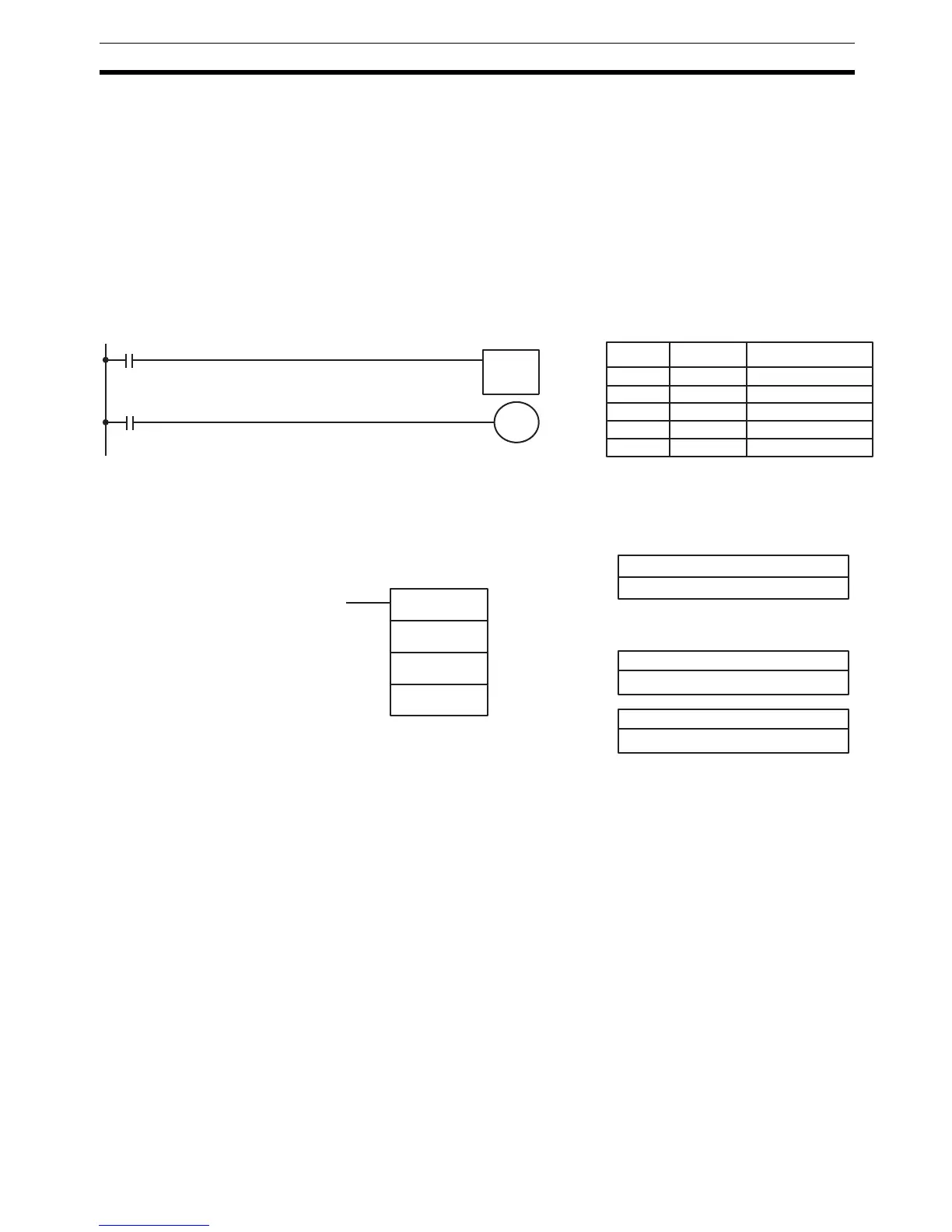239
Timer and Counter Instructions Section 5-16
• If #0001 is set, the Completion Flag may turn ON as soon as the timer’s
execution condition turns ON because timer accuracy is 0 to –0.01 s.
Consider the timer accuracy (0 to –0.01 s) when determining the proper set
value.
Flags ER: SV is not in BCD.
Indirectly addressed EM/DM word is non-existent.
(Content of *EM/*DM word is not BCD, or the EM/DM area boundary
has been exceeded.)
Example The following example shows a timer set with a constant. 01600 will be turned
ON after 00000 goes ON and stays ON for at least 1.5 seconds. When 00000
goes OFF, the timer will be reset and 01600 will be turned OFF.
5-16-5 TOTALIZING TIMER – TTIM(––)
Limitations SV is between 0000 and 9999 and must be in BCD. The decimal point is not
entered.
The EM area is available in CQM1H-CPU61 CPU Units only.
Each TIM/CNT number can be used as the definer in only one TIMER or
COUNTER instruction.
Description TTIM(––) is used to create a timer that increments the PV every 0.1 s to time
between 0.1 and 999.9 s. TTIM(––) increments in units of 0.1 second from
zero. TTIM(––) accuracy is +0.0/–0.1 second. A TTIM(––) timer will time as
long as its execute condition is ON until it reaches the SV or until RB turns ON
to reset the timer. TTIM(––) timers will time only as long as they are executed
every cycle, i.e., they do not time, but maintain the current PV, in interlocked
program sections or when they are jumped in the program.
Note The PVs of decrementing timers such as TIM indicate the time remaining until
the timer times out, but the PVs of TTIM(––) timers indicate the time that has
elapsed. The TTIM(––) PV can be used “as is” to represent the elapsed time
in calculations and displays.
01600
00000
TIM 000
01.50 s
000
#0150
TIMH(15)
Address Instruction Operands
00000 LD 00000
00001 TIMH(15) 000
# 0150
00002 LD TIM 000
00003 OUT 01600
SV: Set value (word, BCD)
IR, AR, DM, EM, HR, LR
RB: Reset bit
IR, SR, AR, HR, LR
Ladder Symbol
Operand Data Areas
TTIM(−− )
N
SV
RB
N: TIM/CNT number
# (000 through 511)
Definer Values
